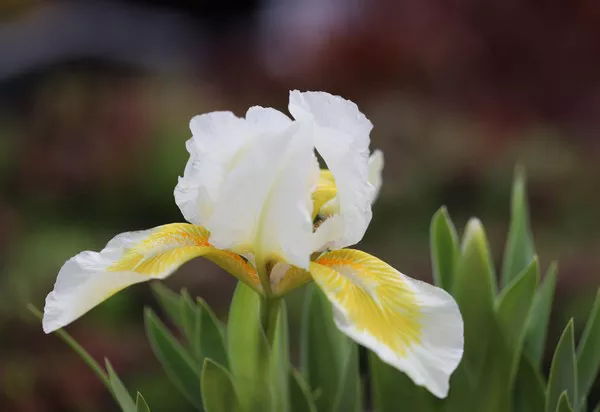Gardening enthusiasts are continually searching for sustainable and cost-effective ways to enhance the growth and flowering of their beloved plants. One such natural remedy is using eggshells as a fertilizer to promote healthy blooms. The concept of using eggshells to nurture flowering plants has gained popularity due to their calcium content and other essential nutrients.
The Nutrient-Rich Eggshell
Eggshells are composed primarily of calcium carbonate, which provides numerous benefits to plants, including flowering specimens. Calcium is a vital nutrient for plant growth and development, as it plays a crucial role in cell division, cell elongation, and structural integrity. When flower plants receive an adequate supply of calcium, they can develop stronger stems and leaves, as well as more robust root systems, ultimately resulting in more prolific flowering.
The Science of Calcium in Flowering
Calcium’s importance in plant physiology cannot be overstated, and it directly influences the flowering process. When flowering plants lack sufficient calcium, they may exhibit signs of calcium deficiency, such as stunted growth, weak stems, and irregular blooming. Calcium deficiency can also lead to disorders like blossom end rot in tomatoes and peppers. By providing a natural source of calcium through eggshells, gardeners can prevent these issues and ensure their flowering plants have the resources they need to produce vibrant blooms.
Eggshells for pH Balance
Apart from calcium, eggshells also help maintain the pH balance of the soil. Most flowering plants thrive in slightly acidic to neutral soils. When the soil becomes too acidic, essential nutrients become less available to the plant roots. Eggshells, with their alkaline nature, can act as a natural pH buffer. As they break down, they gradually increase the soil’s pH, creating a more favorable environment for flowering plants. This balanced pH ensures that the nutrients in the soil are readily accessible for optimal flower growth.
Preparing Eggshells for Use
Before adding eggshells to your garden, it’s essential to prepare them properly. Here’s how you can do it:
Collect and Clean: Save eggshells from your kitchen rather than discarding them. Rinse them thoroughly to remove any remaining egg whites or yolks. Allow them to air dry.
Crush or Grind: Crush the dried eggshells into small pieces or grind them into a powder using a blender or food processor. The finer the shells, the quicker they will break down in the soil.
Storage: Store the crushed eggshells in a cool, dry place until you’re ready to use them.
Calcium Supplement: As an optional step, you can bake the crushed eggshells in the oven at a low temperature to sterilize them. This step can help prevent any potential issues with pests or pathogens.
Using Eggshells in the Garden
Now that you have your prepared eggshells, it’s time to use them to benefit your flowering plants. Here are several ways to incorporate eggshells into your garden:
Mix with Compost: Add crushed eggshells to your compost pile. They will break down over time, enriching the compost with calcium and other essential minerals. When your compost is ready, use it as a soil amendment.
Directly in the Planting Hole: When transplanting or planting new flowering specimens, place crushed eggshells in the planting hole along with the soil. This will provide an immediate calcium boost for the plant.
Sprinkle on Soil Surface: Sprinkle crushed eggshells on the soil surface around your existing flowering plants. This acts as a slow-release fertilizer, ensuring a consistent supply of calcium to the roots.
Create an Eggshell Tea: To give your flowering plants a nutrient-rich liquid boost, steep crushed eggshells in water for a few days. Use this “eggshell tea” to water your plants as a natural fertilizer.
Mulch: Mix crushed eggshells into your garden mulch. Over time, as the mulch breaks down, it will release calcium into the soil.
Eggshell Dos and Don’ts
While using eggshells in your garden can be beneficial, there are some important dos and don’ts to keep in mind:
Dos:
Crush Eggshells: Ensure the eggshells are crushed or ground into small pieces to facilitate their decomposition in the soil.
Use Regularly: Incorporate crushed eggshells into your garden regularly, either through compost, topdressing, or planting hole additions.
Sterilize (Optional): Consider sterilizing eggshells in the oven to prevent potential pest or pathogen issues.
Don’ts:
Avoid Overuse: While eggshells are beneficial, excessive use can create an imbalance in the soil’s pH, so use them in moderation.
Don’t Rely Solely on Eggshells: While eggshells provide valuable calcium, they should be used in conjunction with a balanced, complete fertilizer for optimal plant nutrition.
Beware of Pests: Be cautious about attracting pests to your garden with eggshells. If you notice an increase in unwanted visitors, consider alternative fertilization methods.
Conclusion
Eggshells, often overlooked and discarded in the kitchen, can be a valuable resource for enhancing the health and blooming of your flowering plants. Their calcium content, along with their ability to balance soil pH, makes them a natural and cost-effective fertilizer. By carefully preparing and applying eggshells to your garden, you can provide your flowering plants with the nutrients they need to produce vibrant and prolific blooms. Remember to use eggshells in conjunction with other organic fertilizers to create the ideal growing conditions for your beloved flowers. So, start saving those eggshells and watch your garden come to life with color and beauty.


